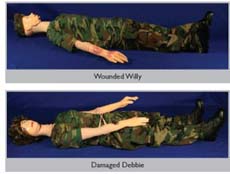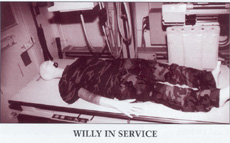Wounded Willy RS-601 and Damaged Debbie RS-602
Full body phantoms with traumas
Anthropomorphic Phantoms for Military Training in Radiography60 traumas and pathologies divided between Willy and Debbie.
Can be positioned realistically
Human technical factors
Unlimited Repetition of views without human exposure
Radiographs that permit evaluation of trainee performance
Teaching/Training for civilian hospital ER's
DESIGN PRINCIPLES FOR RADIOGRAPHIC TEACHING/TRAINING PHANTOMS
It is a universally-accepted fact of life that people cannot be subjected to diagnostic radiography for other than medially-necessary purposes. Observance of this principle rules out the use of patients for basic training in these procedures (but permitting the use of patients for advanced, supervised training).
The re-creation of the human body, in all of its immense complexity, represents overkill for radiographic training. One example of a widely-accepted divergence from precise reproduction of the human is use of transparent phantoms to combine the teaching of radiography with that of anatomy.
Whichever philosophy is pursued, the basic qualifiers of human substitutes are phantoms that yield radiographs resembling those of the human, taken with human technical factors, articulated to enable basic views to be presented, and with an appropriate level of human anatomy.
A phantom is a "trade-off" between acceptable anatomic detail and unacceptable impact of artifacts on the image. WILLY and DEBBIE are based on several decades of experience with "trade-offs", variously driven toward one extreme or another. They yield human-like images, with human technical factors and with limited artifacts, (which are presented clearly as artifacts, not as anatomic detail). They are well balanced patient substitutes for basic training of radiologic technologists, particularly in military or emergency-room environments.
WILLY AND DEBBIE TEACHING/TRAINING CAPABILITIESThey demonstrate and evaluate positioning and imaging techniques, including kVp, mAs, contrast, optical density, OFD and TFD. Their radiographs are optically equivalent to humans in density and contrast.
WILLY AND DEBBIE DIFFERENCES:The most obvious difference between them is in the complement of traumas and pathologies assigned to each.
Another difference is that DEBBIE has female breasts, while WILLY has natural male chest contours. DEBBIE is fitted with a wig, while WILLY is bald. They are dressed in camos for military training and in jump suits for civilian training.
REALISM OF TRAUMAS AND PATHOLOGIESThere is no single, unique description of any of their traumas and pathologies. Rather, there are limitless variations among a broad range of casualties. The most meaningful judgements of the realism of trauma and pathologies are those based on long radiographic experience across the spectrum of casualties.
Patrick Hale, Senior Radiologic Technologist at the UCLA Emergency Room and an RSD consultant, made those judgements with respect to WILLY and DEBBIE.
|
DIMENSIONS The size and weight of PIXY are also used for WILLY and DEBBIE. They are small adults. Since technologists must learn to work with patients of all sizes and weights, a smaller phantom is as valid for training as a larger phantom, and positioning is facilitated. Each is 5 ft. 1 in. tall (156cm) and weighs 105 lbs. (48 kg). ANATOMY WILLY and DEBBIE are articulated at the neck, shoulders, elbows, hips and knees. Fractures of the left shoulder and left hip are located in DEBBIE. To minimize handling problems, all other traumas of the arms and legs are located in WILLY and on the right side of DEBBIE. The articulations provide a broad range of positioning of capabilities, even the "frog position." LUNGS Lungs are molded of durable materials with radiodensities matched to humans in a median respiratory state. Animal lungs matching the human in size and blood vessels are available, but they are oriented towards research rather than training. |
SOFT TISSUES WILLY and DEBBIE have solid "soft tissues" that are hard and rigid. They cannot be palpated to locate traumas. However, radiological technologists are generally informed by the physician as to the views to be taken. The manual provides this information to instructions. SKELETONS RSD-manufactured skeletons are used rather than natural human skeletons. The latter are generally unavailable and usually consist of an assortment of bones ranging from children to adults of ages for which osteoporosis becomes a factor. RSD skeletons are not to be confused with plastic skeletons for teaching anatomy. RSD skeletons are made to fit the soft-tissue molds precisely. They have spongiosa moldings within marrow cavities and outer, cortical bone. Both constituents meet the internationally-accepted standards for radiodensity and specific gravity. |
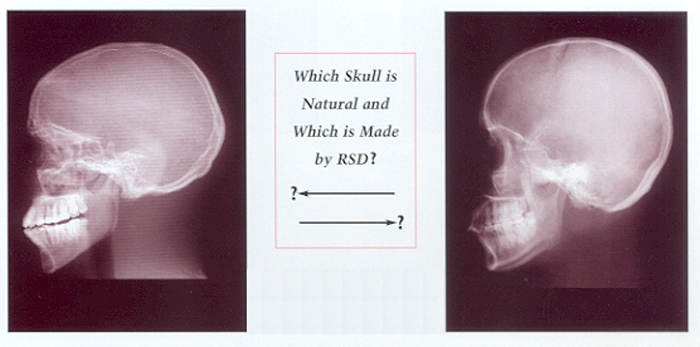 Click here to find out |
|
|
LEGEND: Traumas and pathologies are listed below. External markings are: N (none), O (open wound), S (swelling), H (bullet or foreign body hole), B (bruise), Side (R.L.), E (WILLY or DEBBIE). HEAD |
||||
|
# 1 2 3 4 5 6 7 8 9 10 |
WILLY/DEBBIE WILLY WILLY WILLY WILLY WILLY WILLY DEBBIE DEBBIE DEBBIE DEBBIE |
Description Metallic fragment in orbit Multiple fragments lower face Step deformity of intraorbital rim Separated fracture of frontal zygomatic suture Metallic foreign body over skull Mandible fracture with missing bone Depressed comminuted fracture of zygomatic arch Mandibular fractures Cloudy maxillary sinus Fracture of nasal bones with mild displacement |
Side R N/A L L N/A N/A L R L N/A |
External Marking N N B S N O S S,B N H |
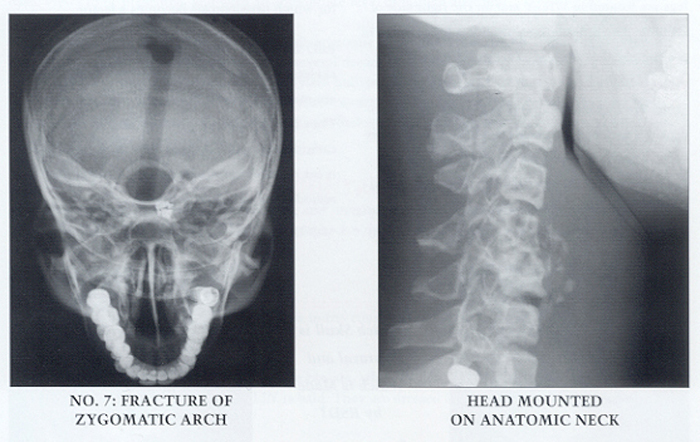 |
||||
|
Note: An axial duct is seen above. It is filled by a polycarbonate rod to assemble the head and neck to T1. When assembled, the duct artifact is barely visible. Anatomic and mechanical necks are interchangeable between WILLY and DEBBIE. Heads are interchangeable between WILLY and DEBBIE. |
||||
|
LEGEND: Traumas and pathologies are listed below. External markings are: N (none), O (open Wound), S swelling), H (bullet or foreign body hole), B (bruise), Side (R.L.), E (WILLY or DEBBIE). HEAD |
||||
|
# 11,12 |
WILLY/DEBBIE WILLY |
Description Displacement fracture of mandibular condyle |
Side L&R |
External Marking S |
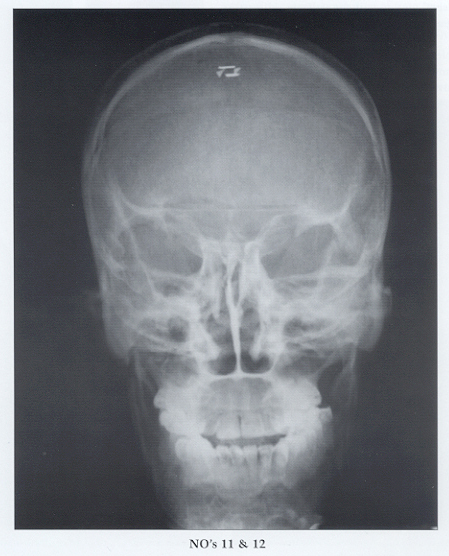 |
||||
|
LEGEND: Traumas and pathologies are listed below. External markings are: N (none), O (open Wound), S swelling), H (bullet or foreign body hole), B (bruise), Side (R.L.), E (WILLY or DEBBIE). NECKS |
|||||||||
|
Among the "trade-offs" required in these phantoms is that between anatomic fidelity and the ability to move the head into the broad range of views required in radiography.
No mechanism can be designed for intervertebral motion without artifacts obliterating the radiographs. This problem has been solved by the use of two necks. One is a multi-articulated polycarbonate assembly which provides for nearly all commonly used views. An alternate, fully realistic neck is interchangeable with the mechanical neck. The cervical spine of this neck contains traumas. |
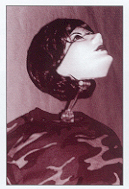 MECHANICAL NECK (FOAM FLESH REMOVED) |
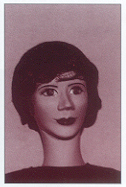 ANATOMIC NECK |
|||||||
|
# 13 14 15 |
WILLY / DEBBIE E E E |
Description C4, C5 Compression fracture C7 Fractured by bullet C-spine bullet anterior to trachea shadow |
Side N/A N/A N/A |
External Marking N H H |
|||||
|
LEGEND: Traumas and pathologies are listed below. External markings are: N (none), O (open wound), S (swelling), H (bullet or foreign body hole), B (bruise),
Side (R.L.), E (WILLY or DEBBIE). THORAX |
||||
|
# 16 17 18 19 20 21 22 23 24 25, 26 |
WILLY / DEBBIE WILLY WILLY WILLY WILLY WILLY WILLY WILLY WILLY WILLY WILLY |
Description Fracture of lateral ribs 6 & 7 Mediolateral fracture of ribs 8 & 9 Multiple rib fractures, four metallic fragments visible 12th rib fracture Bullet in hemothorax overlaying 8th rib Bullet overlying heart shadow 2 cm metallic fragment in mid chest Bullet visible below costal margin under 11th rib 2 Bullets in LUQ Shattered distal scapulae |
Side R L R R L N/A R L L R&L |
External Marking N N N N H H N H H H |
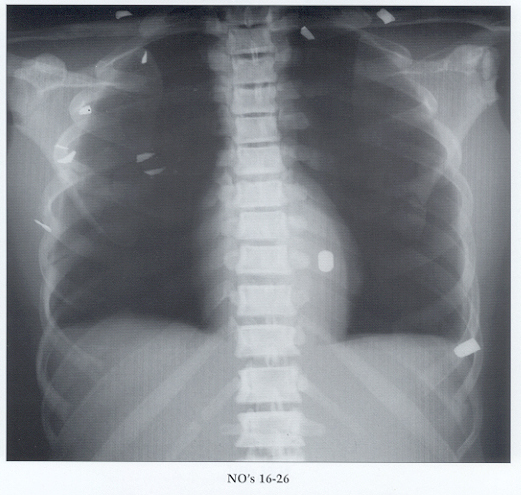 |
||||
|
LEGEND: Traumas and pathologies are listed below. External markings are: N (none), O (open wound), S (swelling), H (bullet or foreign body hole), B (bruise), Side (R.L.), E (WILLY or DEBBIE).
THORAX |
||||
|
Number
27 28 29 |
WILLY/DEBBIE
DEBBIE DEBBIE DEBBIE |
Description
Widened mediastinum and pleural effusion Chest tube, lung inflated Infiltrate |
Side
N/A L N/A |
External Marketing
N Tube N |
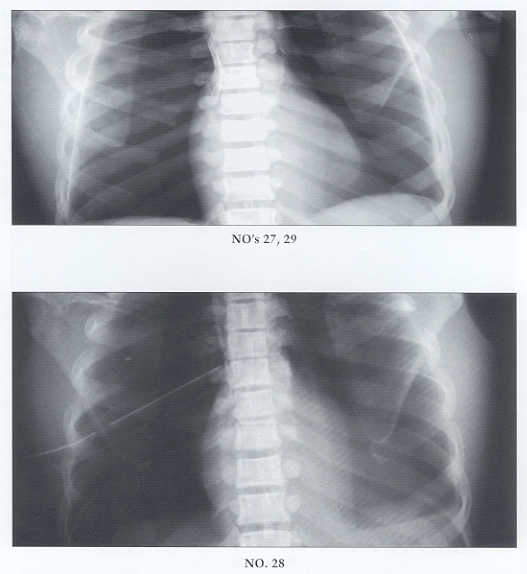 |
||||
|
LEGEND: Traumas and pathologies are listed below. External markings are: N (none), O (open wound), S (swelling), H (bullet or foreign body hole), B (bruise), Side (R.L.), E (WILLY or DEBBIE).
ABDOMEN |
||||
|
Number
30 31 32 33 34 35 36 37 38 |
WILLY / DEBBIE
DEBBIE WILLY WILLY DEBBIE DEBBIE DEBBIE DEBBIE DEBBIE WILLY |
Description
Bullet in mid-abdomen Unstable fracture of L1 Compression fracture of L5 Metallic foreign body lateral to PSOAS Compression fracture of L4 Metallic fragments - 2 midabdomen, 1 each in RLQ and LLQ Bullet in midabdomen Metallic fragments - 2 midabdomen, 1 each: RLQ and LLQ ILIAC crest comminuted fracure with metallic fragments |
Side
R L R R L N/A R L L |
External Marking
N N N N H H N H H |
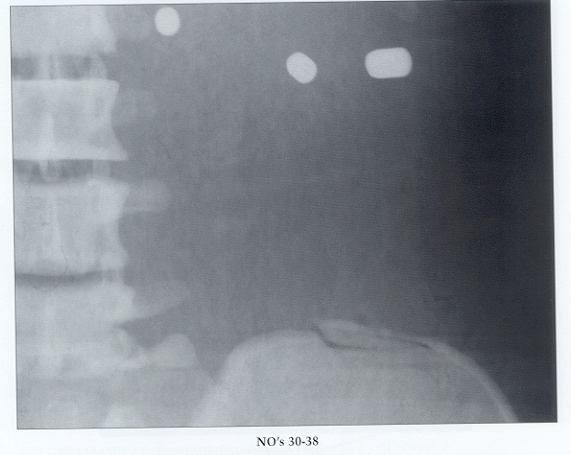
|
||||
|
LEGEND: Traumas and pathologies are listed below. External markings are: N (none), O (open wound), S (swelling), H (bullet or foreign body hole), B (bruise), Side (R.L.), E (WILLY or DEBBIE). PELVIS |
||||
|
# 39 40 41 42 43 44 45 |
WILLY / DEBBIE
DEBBIE DEBBIE DEBBIE WILLY WILLY WILLY WILLY |
Description
Displaced fracture of pubic ramus Sacroiliac disruption, acetabular fracture Foreign body lateral to PSOAS Non-displaced pubis ramus fracture Superior and inferior pubic ramus fracture Pelvis fracture with symphysis diastasis and sacroiliac joint disruption Bullet in sacrum |
Side
L L R N/A R N/A N/A |
External Marking
N N N N N N N |
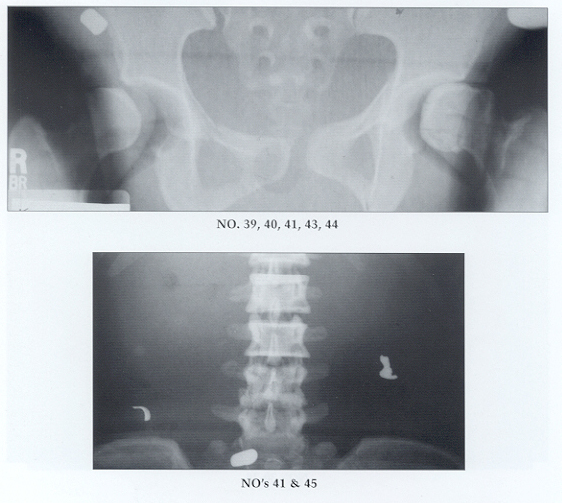 |
||||
|
LEGEND: Traumas and pathologies are listed below. External markings are: N (none), O (open wound), S (swelling), H (bullet or foreign body hole), B (bruise), Side (R.L.), E (WILLY or DEBBIE). HIPS JOINTS AND THIGHS |
||||
|
#
46 47 48 49 |
WILLY / DEBBIE
WILLY WILLY WILLY WILLY |
Description
Shattered acetabulum Shattered femoral head Comminuted midshaft fracture Left femur comminuted fracture 12 cm above knee |
Side L L L L |
External Marking
Latex "shorts" Latex "shorts" S S |
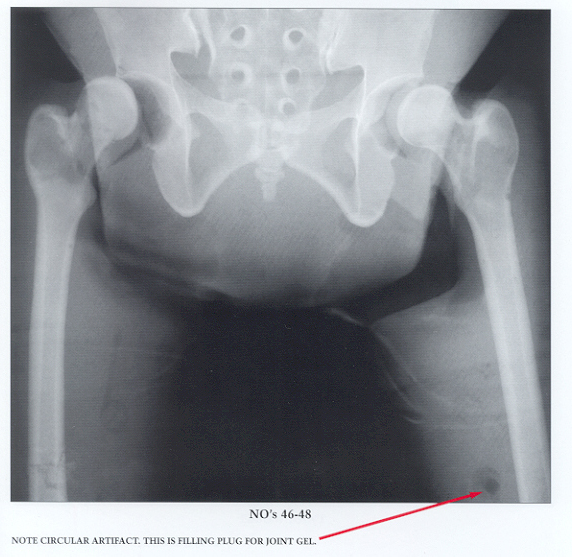
|
||||
|
LEGEND: Traumas and pathologies are listed below. External markings are: N (none), O (open wound), S (swelling), H (bullet or foreign body hole), B (bruise), Side (R.L.), E (WILLY or DEBBIE). KNEES. LOWER LEGS, FEET |
||||
|
#
50 51 52 53 54 |
WILLY / DEBBIE
DEBBIE WILLY WILLY DEBBIE DEBBIE |
Description
Proximal tibia fracture Comminuted fracture of tibia and fibula Displaced ankle fracture Minimally displaced distal tibia fracture Displaced fracture of calcaneus bone |
Side
L R R R R |
External Marking
S S S S N |
 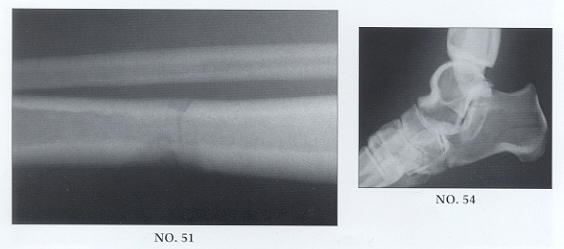 |
||||
|
LEGEND: Traumas and pathologies are listed below. External markings are: N (none), O (open wound), S (swelling), H (bullet or foreign body hole), B (bruise), Side (R.L.), E (WILLY or DEBBIE). SHOULDER AND ELBOW JOINTS |
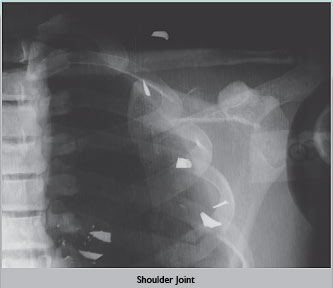 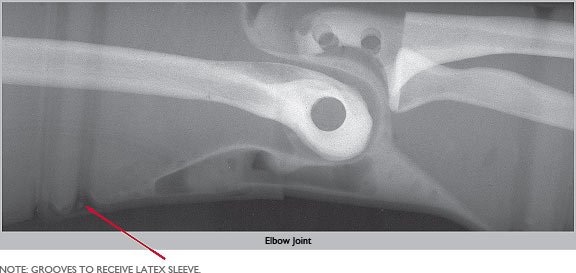
|
|
LEGEND: Traumas and pathologies are listed below. External markings are: N (none), O (open wound), S (swelling), H (bullet or foreign body hole), B (bruise), Side (R.L.), E (WILLY or DEBBIE). FOREARMS |
||||
|
#
55 56 57 58 |
WILLY / DEBBIE
WILLY DEBBIE WILLY DEBBIE |
Description
Displaced fracture of radius and ulna Volar angulated distal radius and ulna fracture Angulated comminuted fracture of midshaft radius and ulna Minimally-displaced distal radius fracture not involving wrist, offset bone ends |
Side
L L R R |
External Marking
|
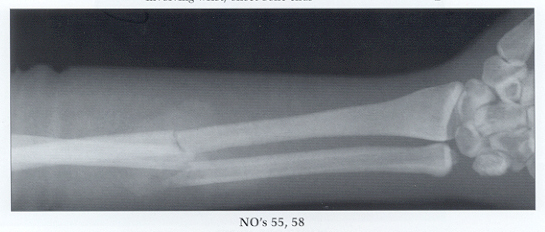
|
||||
|
LEGEND: Traumas and pathologies are listed below. External markings are: N (none), O (open wound), S (swelling), H (bullet or foreign body hole), B (bruise), Side (R.L.), E (WILLY or DEBBIE). HANDS |
||||
|
#
59 |
WILLY / DEBBIE
DEBBIE |
Description
3rd and 4th metacarpals shattered |
Side
L |
External Marking
Thickened, back of hand |
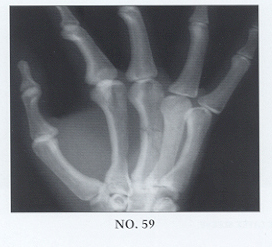 |
||||
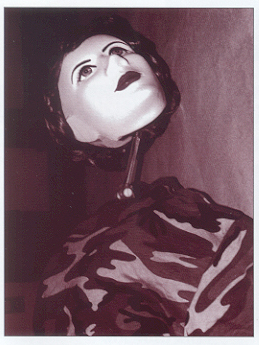
|
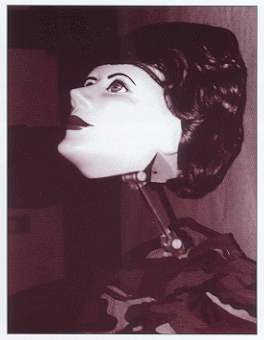
|
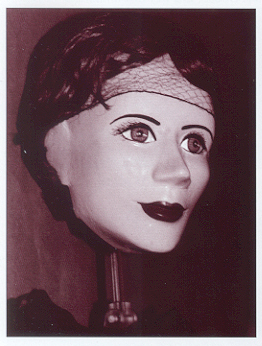
|
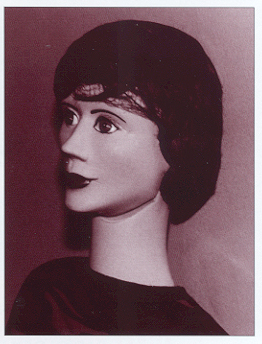
|
| ORDERING INFORMATION | |
|
RS-600 TEACHING / TRAINING PHANTOMS SYSTEM Includes: |
|
|
RS-601 RS-602 RS-603 RS-604 RS-605 |
WOUNDED WILLY DAMAGED DEBBIE ANATOMIC NECK MECHANICAL NECK WITH FOAM FLESH NECK/1 EA. FOR WILLY & DEBBIE TRAUMAS AND PATHOLOGIES (-01 TO -59) |
|
RS-610 CUSTOM ITEMS: Traumas and pathologies are divided between WILLY and DEBBIE in a way that minimizes interference between them. Some changes can be made in locations of each, or additional traumas and/or pathologies can be added or substituted for others. Ask about special requirements and pricing of changes. Charges cannot usually be retrofitted. |
|



